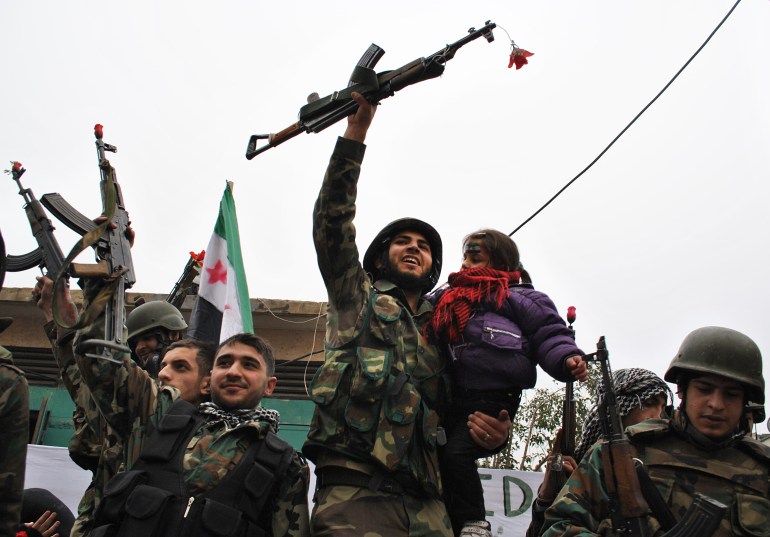What is the Arab Spring, and how did it start?
Ten years ago, revolts spread like wildfire across the Arab world, spurring events that changed the region.
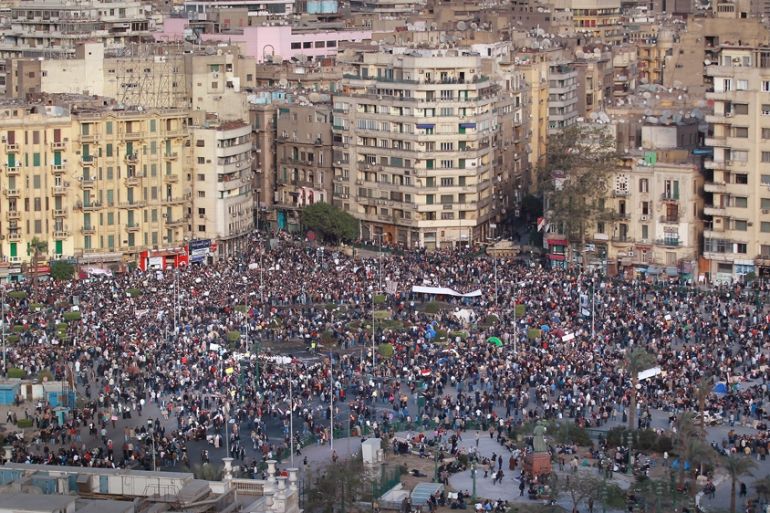
From the fall of old, authoritarian leaders to the repression of revolts, here are some key dates and events that make up what is known as the Arab Spring.
The Tunisian spark
On December 17, 2010, a young Tunisian who sold vegetables from a barrow set himself afire to protest against police harassment.
Keep reading
list of 3 itemsHow economic hardship fuelled the Arab Spring 10 years ago
Remembering Mohamed Bouazizi: The man who sparked the Arab Spring
Mohamed Bouazizi died on January 4, 2011, but not before his gesture went viral, sparking protests against the cost of living and the country’s authoritarian President Zine El Abidine Ben Ali.
Ben Ali’s 23-year-rule ended 10 days later when he fled to Saudi Arabia, becoming the first leader of an Arab nation to be pushed out by popular protests.
The protests inspired a wave of revolts across the Arab world as people rose up to protest against authoritarianism, corruption, and poverty.
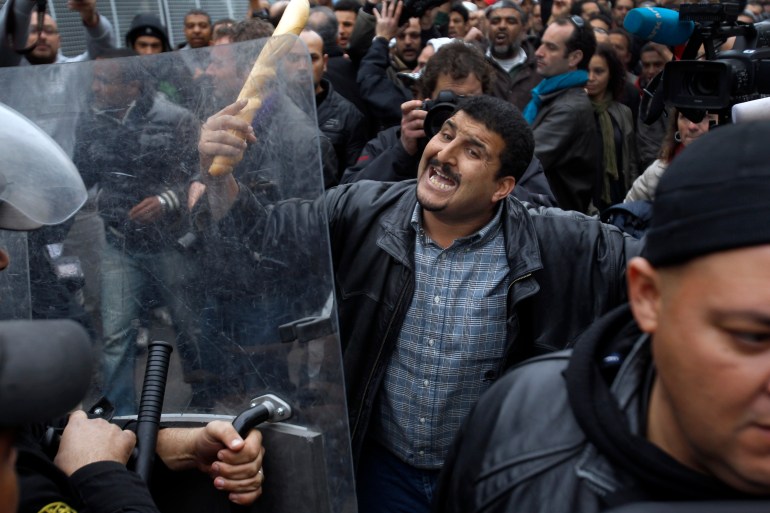
‘Mubarak out!’
On January 25, 2011, thousands of Egyptians marched in Cairo, Alexandria and other cities, demanding the departure of President Hosni Mubarak, who had been in power for 30 years.
On February 11, as more than a million took to the streets, Mubarak resigned and handed control to the military.
The Muslim Brotherhood-linked government of Mohammed Morsi was elected in 2012, but was overthrown the following year by the military led by the general, now president, Abdel Fattah el-Sisi.
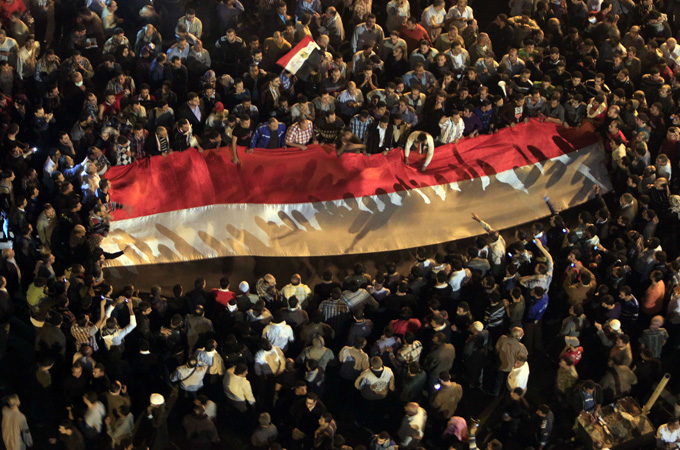
Bahrain’s ‘Tahrir’
On February 15, protesters took over the Pearl Square roundabout in the capital which they renamed “Tahrir Square”, and demanded a constitutional monarchy among other reforms.
But their camp was stormed by riot police three days later, killing three people and injuring many.
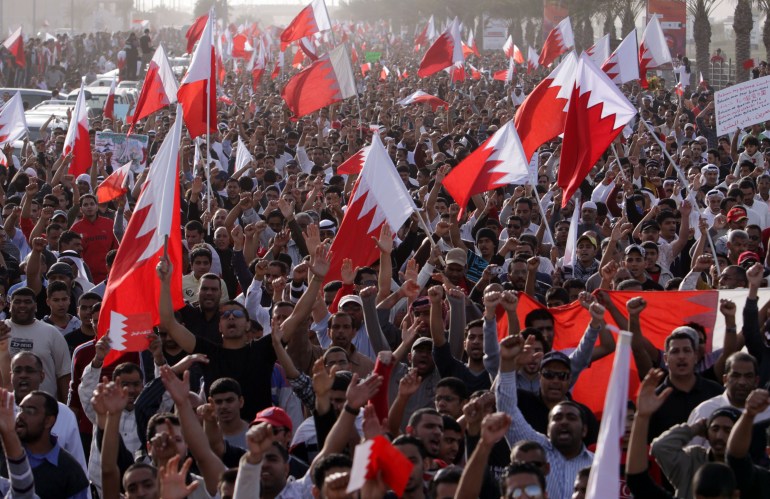
Libya explodes
The same day the Bahrain protests started, the Libyan police used force to break up a sit-in against the government in the second city, Benghazi.
The country’s leader Muammar Gaddafi pledged to hunt down the “rats” opposing him.
The uprising turned into a civil war with French, British and American air forces intervening against Gaddafi.
On October 20, 2011, Gaddafi was captured and killed in his home region of Sirte by rebels who found him hiding in a storm drain.
The country is now split between rival eastern and western-based administrations.
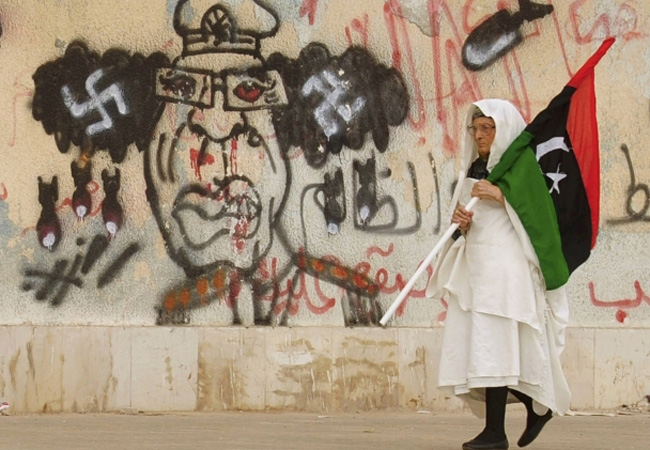
Syria follows
On March 6, a dozen teenagers tagged the wall of their school in southern Syria with “Your turn, doctor”, referring to President Bashar al-Assad, a trained ophthalmologist.
The torture of the youths sparked mainly peaceful protests at first, and calls for democratic reform.
But with violent repression by the government, the revolt turned into civil war.
Syria’s war also contributed to the rise of the ISIL (ISIS) group and renewed conflict in neighbouring Iraq, culminating in a genocidal attack on minorities in the north of the country.
Tunisia’s first election
On October 23, 2011, Tunisians streamed to the polls for their first free election, in which members of the Ennahdha movement triumph.
Yemen’s Saleh goes
On February 27, 2012, Ali Abdullah Saleh, who had ruled Yemen for 33 years, handed power to his deputy Abdrabuh Mansur Hadi, after a year of protests.
The Arab world’s poorest country, Yemen, also descended into violence following initial protests.
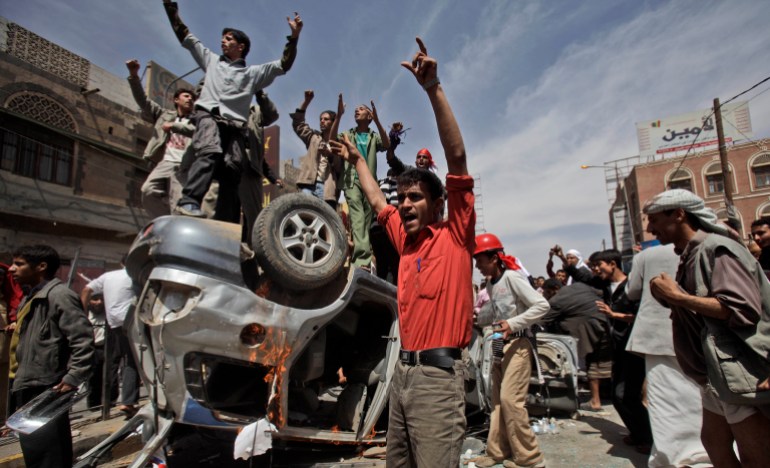
Moscow saves al-Assad
Russia, who with Iran is al-Assad’s biggest ally, started air attacks against Syrian rebels on September 30, 2015, changing the course of the war.
After 10 years of fighting, which left 380,000 dead, al-Assad was able to claim significant victories.
